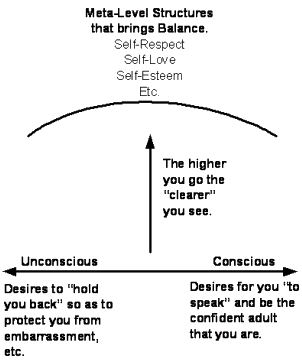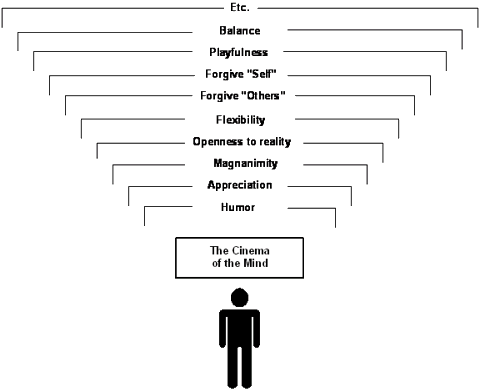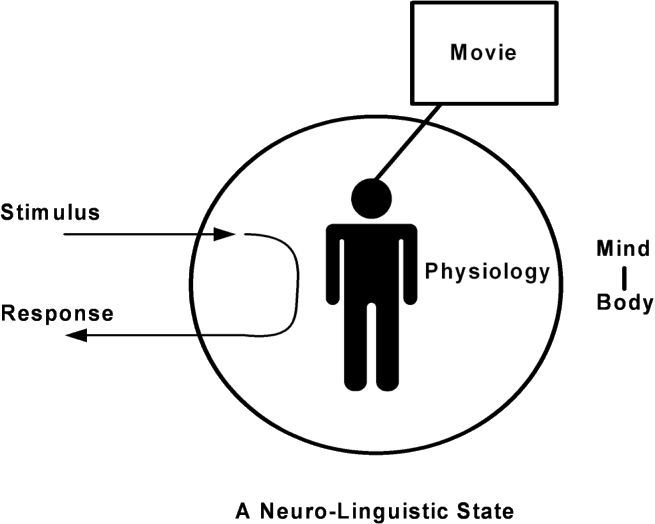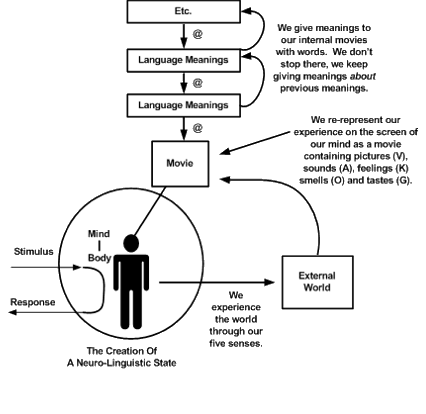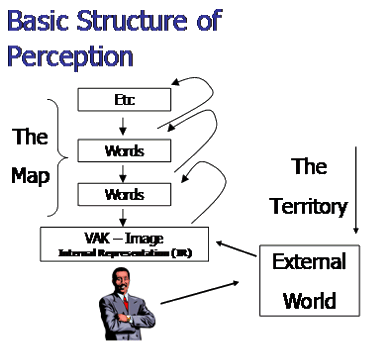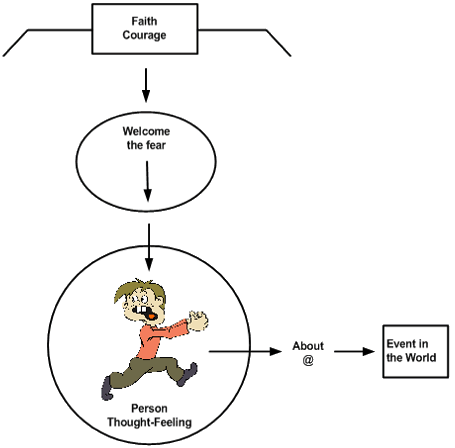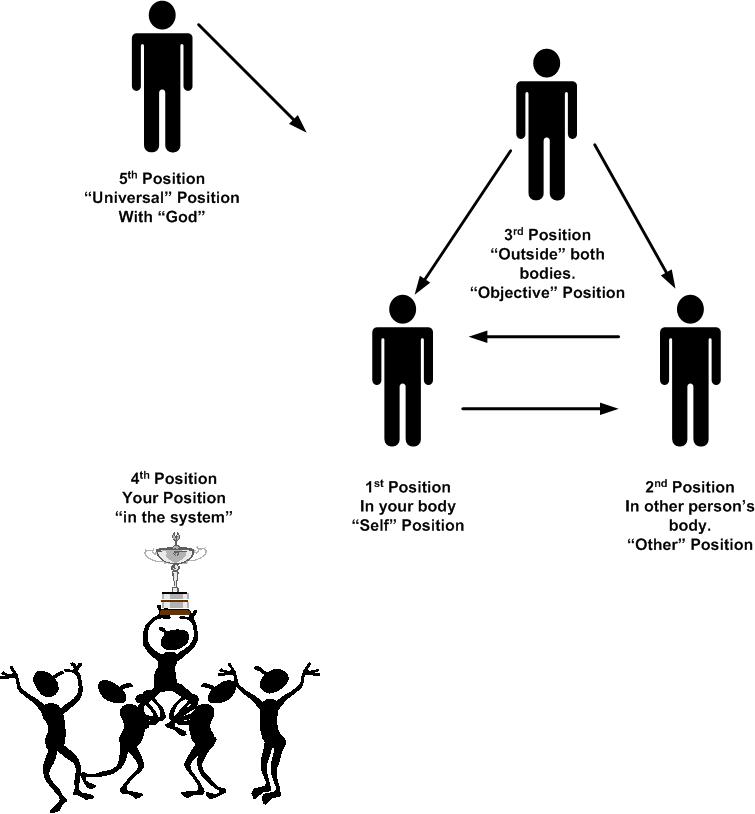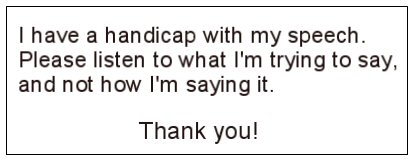Hall of Frames
Frames of Secrecy vs. Openness
L. Michael Hall, Ph.D.
In the field of Family Systems there is a little aphorism that summarizes one of the main themes in working with families to promote health, healing, sanity, and love. It’s a great line and I still use it often even though I do not formally do family or marriage counseling these days. In fact, recently Bob and I have talked about this phrase and commented about how powerful and magical it is. What’s the line? It is this.
A family is as sick as its secrets.
The power and magic within this phrase or principle identifies such healing factors for the mind-body system and for relationships as―openness, vulnerability, transparency, fallibility, humility, accountability, responsibility, etc. How can so many healing and magical ideas be contained in one line? Let’s see. Let’s pull it apart and notice all of the frames within frames, systems of thoughts-and-feelings within thoughts-and-feelings contained in such a high level principle about families and relationships.
Frames by Implication
In Neuro-Semantics, we speak about frames by implication a lot. This is the idea that within one idea there can be other embedded ideas or frames. In common language we call these “assumptions” or “presuppositions.” We presuppose some working assumptions in order to be able to say something. Structurally, an idea is embedded inside of many other frames― a matrix of frames. This gives us belief systems, value systems, systems involve domains of knowledge, understandings, rules, models of the world, etc.
So, what are the frames by implication in the idea of secrecy/openness? For beginners, we are secretive rather than open when we:
- have something to hide
- fear being seen
- fear being open and vulnerable
- conflicted inside about our own thinking, valuing, believing
- unsure, indecisive, hesitant
- fearful of not being in control of others, their responses
This is just a beginning and preliminary start. We can add other things.
What other things would you add to this list?
When you think about times when you have been secretive, what has driven that?
As you well know, none of us are born secretive. Infants and small children are not secretive. If you have any question about that, just watch them. They are open, vulnerable, and transparent. They have nothing to hide. They are who they are. This is what makes them so charming, so loveable, is it not?
Then we being the socializing and culturalizing of them, teaching them to cover their mouth when they eat or burp, or to go to the toilet for certain functions. Our teaching is so help them to become appropriate in their actions and behaviors in society. The problem is that some parents over-do this and frame some responses as if they were “bad” or “evil.” Then there are experiences in which some become afraid of being open because of the harsh criticism or rejection they get. So they grow up becoming afraid of being open.
Others simply lack good role models. No one exemplifies for them how to move through the world as an open, vulnerable, and fallible human being―holding a basic sense of respect and dignity for self as a fallible human being. This is a map they lack, the map that they never developed. Then there are others who were unfortunate enough to be born into family, racial, and national cultures that forbid openness and that rewarded secrecy. Their role models put on airs as if they were always flawless, perfect, beyond criticism and other idiotic ideas about human beings.
The result?
People develop secrecy dragons― privacy dragons, fear of openness dragons, vulnerability dragons, arrogance dragons, fear of being wrong dragons, fear of open confrontation dragons, needing to control dragons, control freak dragons, fear of open communication dragons, and the list goes on. Then some even “identify” with it, “I am a private person.”
What’s the problem?
Insecurity.
They do not like being insecure. Of course, insecurity is the human condition! But they do not accept insecurity. They do not like insecurity. They are afraid of insecurity. So they pretend. They put on false fronts. They put others down in their arrogance in order to push themselves up. They hide. They will not come out in the open. They invent belief systems to support their fear of vulnerability. Hitler did and bought into Aryan supremacy. That made him feel better. But it was sick … through and through and we all know the consequences of that toxic belief system.
Slaying / Taming the Dragon
Dancing with the Fear of Vulnerability dragon or the Secrecy Dragon is not a fun dance. Sometimes I find it challenging to get a person to dance with it. The denial frames are strong as the person defends him or herself against even going there. But without dealing with these dragons, a person locks him or herself into a dungeon of insecurity, locked up behind the defense mechanisms and inside with the fear demon. This is not good. It creates a basic existential insecurity so that the person cannot be open, cannot be held accountable, cannot take full responsibility for life, cannot make mistakes and maintain dignity (self-esteem), cannot take risks for “what will people think” if they see me as a vulnerable human being?
I don’t know about you, but I don’t want any of this.
These ideas makes people sick. Literally. Physically. A family and an individual person is as sick as his or her secrets because keeping, holding, and maintaining secrets wastes a lot of energy. It takes a lot of mental and emotional energy just to remember them. It takes energy to keep up the defensive walls and to be on one’s guard against being seen, being open, being real.
And because it prevents a person from being “real” and authentic, the person cannot have real authentic relationships. That’s right. The person can only play “games” and relate to others through layers of masks. The person they present is not real, but a persona, a mask, a set of roles. This creates self-alienation.
And the fear of being exposed―the fear of being seen―that can create an existential fear that turns our emotions against ourselves that can then take a toll in the body in all kinds of stress diseases, psycho-somatic illnesses, etc. No, the Secrecy Dragon is a beast. The Fear of being Vulnerable dragon is one that prevents you from being a real live human being― fallible, weak, and insecure.
Dancing a New Dance
The meta-state structure of openness to vulnerability, openness to being real, to being what we are, fallible, to being accountable, responsible, etc. is a very wonderful and magical state. Here’s how I’ve put my richly textured state of openness to vulnerability together.
- First I access my power-zone of my basic God-given responses: thinking, feeling, speaking, and acting. These are mine… fallible, yes, but my fallible responses.
- So I accept them … and then go further, I appreciate and esteem these fallible powers as the powers I have to influence myself, others, and my world. Fallible? Sure, and that means that I have lots of room to grow. It also means that I stubbornly reject any toxic idea about being flawless or perfect. “Hell no!” I welcome warmly into my mind and emotions my right to make mistakes and to learn from them. Feedback is what I use to keep growing and developing.
- I then use these fallible powers to esteem myself as having worth and dignity as a given and this self-esteeming foundation then allows me to not be afraid of being what I am. It, in fact, gives me the freedom to use my vulnerability and neediness to be real and authentic in my relationships. Now I can present myself as “just me.” I need to put on no airs of being a “somebody” because of my money, status, degrees, intelligence, looks, fame, etc. Non-sense! I have been a “somebody” since I dropped from the womb (Oh, so that’s what happened!) completely naked and having no control over my bladder for a long time! I arrived in this world a human being … a somebody … and I haven’t had to prove anything to anyone since!
- I accept and welcome being a response-able person who can take actions and I welcome the corrections of others. I even appoint people to “hold me accountable.” In my case, I have appointed Bob Bodenhamer and Carl Lloyd to do that. I want to live up to my own goals and values and I know that they will help me to be a better person.
- When I make a mistake, I welcome correction so that I can quickly learn, proactively make corrections, and get on with things. I refuse to wallow around feeling bad, feeling guilty, feeling inadequate. Of course, I’m inadequate. I’m human; I’m not god. And guilt ― true guilt, means that I have done wrong and need to correct something. Like a “Wrong Way” sign on a highway. No need to feel bad, just turn around ― go the other way!
- I access the higher state of un-insultability based upon my innate dignity and therefore can matter-of-factly explore insults, criticisms, and rejections. Along that line, I give myself permission to be rejected. Of course, everybody won’t like me. What was I thinking? Of course, everybody is not going to like everything I say, do, believe, write, etc. So I grant myself permission to be disliked. It’s not that big of a deal. What, I only have 6 billion other people on the planet to relate to? That’s not enough?
- I set a frame of openness and vulnerability and trust as my basic “way of being in the world.” So I live my life like an “open book.” Some will want to read and hang around; others won’t. If someone comes into my life and decides to use my openness and vulnerability against me, I give them a chance or two and then I do what the great Nazareth teacher said, “Don’t cast your pearls before swine.. Lest they turn and tear into you and trod your pearls underfoot.” Jesus’ statement is in the context of relationships, “Do unto others as you want them to do until you,” and “Judge not lest you be judged” (Matthew 7:1-12). It’s a passage about getting along. Be open and accepting rather than judging, but also be as wise as a serpent and harmless as a dove. If someone is hurtful and ugly, get the hell out of there! Don’t put up with it.
Super-Charge your Brain
That’s how I’ve super-charged my brain about being open. I refuse to live my life with secrets and go around fearful of what people may find out. And without the Dragon of Fear of Secrecy, Fear of Vulnerability ―it releases a lot of energy and power to follow my passions. It gives me a clear conscience. It enables me to live congruently with my values and visions.
I feel sad for the pathetic matrix that some people live in as they sneak around in the secret caverns of their mind fearful of people, fearful of being exposed, fearful of being real, fearful of just living their lives openly. What a waste. Pretty arrogant really. While they are inside worrying about what others are thinking, the others that they fear are inside worrying about what others are thinking! And the real people― those open to being vulnerable, being authentic, receiving corrections, growing, etc., they are just getting on doing things and having fun.
As a Neuro-Semanticist, I think you now see why we have structured Accessing Personal Genius training as we have. Inside that program there are other things going on. This is one of them.
References
Hall, Michael L. (2000). Meta-States: Managing the higher levels of the mind. Grand Jct. CO: N.S. Publications.
Hall, Michael. L. (2000). Dragon Slaying. Grand Junction, CO. Neuro-Semantic Publications
Hall, Michael L. (2002). Dancing with Dragons. Article
Author:
L. Michael Hall, Ph.D., cognitive psychologist, international NLP trainer, entrepreneur; prolific author and international training; developer of Meta-States and co-developer of Neuro-Semantics. (P.O. Box 8, Clifton CO 81520), (970) 523_7877. www.neurosemantics.com
Hall of Frames
Frames of Secrecy vs. Openness
L. Michael Hall, Ph.D.
In the field of Family Systems there is a little aphorism that summarizes one of the main themes in working with families to promote health, healing, sanity, and love. It’s a great line and I still use it often even though I do not formally do family or marriage counseling these days. In fact, recently Bob and I have talked about this phrase and commented about how powerful and magical it is. What’s the line? It is this.
A family is as sick as its secrets.
The power and magic within this phrase or principle identifies such healing factors for the mind-body system and for relationships as―openness, vulnerability, transparency, fallibility, humility, accountability, responsibility, etc. How can so many healing and magical ideas be contained in one line? Let’s see. Let’s pull it apart and notice all of the frames within frames, systems of thoughts-and-feelings within thoughts-and-feelings contained in such a high level principle about families and relationships.
Frames by Implication
In Neuro-Semantics, we speak about frames by implication a lot. This is the idea that within one idea there can be other embedded ideas or frames. In common language we call these “assumptions” or “presuppositions.” We presuppose some working assumptions in order to be able to say something. Structurally, an idea is embedded inside of many other frames― a matrix of frames. This gives us belief systems, value systems, systems involve domains of knowledge, understandings, rules, models of the world, etc.
So, what are the frames by implication in the idea of secrecy/openness? For beginners, we are secretive rather than open when we:
- have something to hide
- fear being seen
- fear being open and vulnerable
- conflicted inside about our own thinking, valuing, believing
- unsure, indecisive, hesitant
- fearful of not being in control of others, their responses
This is just a beginning and preliminary start. We can add other things.
What other things would you add to this list?
When you think about times when you have been secretive, what has driven that?
As you well know, none of us are born secretive. Infants and small children are not secretive. If you have any question about that, just watch them. They are open, vulnerable, and transparent. They have nothing to hide. They are who they are. This is what makes them so charming, so loveable, is it not?
Then we being the socializing and culturalizing of them, teaching them to cover their mouth when they eat or burp, or to go to the toilet for certain functions. Our teaching is so help them to become appropriate in their actions and behaviors in society. The problem is that some parents over-do this and frame some responses as if they were “bad” or “evil.” Then there are experiences in which some become afraid of being open because of the harsh criticism or rejection they get. So they grow up becoming afraid of being open.
Others simply lack good role models. No one exemplifies for them how to move through the world as an open, vulnerable, and fallible human being―holding a basic sense of respect and dignity for self as a fallible human being. This is a map they lack, the map that they never developed. Then there are others who were unfortunate enough to be born into family, racial, and national cultures that forbid openness and that rewarded secrecy. Their role models put on airs as if they were always flawless, perfect, beyond criticism and other idiotic ideas about human beings.
The result?
People develop secrecy dragons― privacy dragons, fear of openness dragons, vulnerability dragons, arrogance dragons, fear of being wrong dragons, fear of open confrontation dragons, needing to control dragons, control freak dragons, fear of open communication dragons, and the list goes on. Then some even “identify” with it, “I am a private person.”
What’s the problem?
Insecurity.
They do not like being insecure. Of course, insecurity is the human condition! But they do not accept insecurity. They do not like insecurity. They are afraid of insecurity. So they pretend. They put on false fronts. They put others down in their arrogance in order to push themselves up. They hide. They will not come out in the open. They invent belief systems to support their fear of vulnerability. Hitler did and bought into Aryan supremacy. That made him feel better. But it was sick … through and through and we all know the consequences of that toxic belief system.
Slaying / Taming the Dragon
Dancing with the Fear of Vulnerability dragon or the Secrecy Dragon is not a fun dance. Sometimes I find it challenging to get a person to dance with it. The denial frames are strong as the person defends him or herself against even going there. But without dealing with these dragons, a person locks him or herself into a dungeon of insecurity, locked up behind the defense mechanisms and inside with the fear demon. This is not good. It creates a basic existential insecurity so that the person cannot be open, cannot be held accountable, cannot take full responsibility for life, cannot make mistakes and maintain dignity (self-esteem), cannot take risks for “what will people think” if they see me as a vulnerable human being?
I don’t know about you, but I don’t want any of this.
These ideas makes people sick. Literally. Physically. A family and an individual person is as sick as his or her secrets because keeping, holding, and maintaining secrets wastes a lot of energy. It takes a lot of mental and emotional energy just to remember them. It takes energy to keep up the defensive walls and to be on one’s guard against being seen, being open, being real.
And because it prevents a person from being “real” and authentic, the person cannot have real authentic relationships. That’s right. The person can only play “games” and relate to others through layers of masks. The person they present is not real, but a persona, a mask, a set of roles. This creates self-alienation.
And the fear of being exposed―the fear of being seen―that can create an existential fear that turns our emotions against ourselves that can then take a toll in the body in all kinds of stress diseases, psycho-somatic illnesses, etc. No, the Secrecy Dragon is a beast. The Fear of being Vulnerable dragon is one that prevents you from being a real live human being― fallible, weak, and insecure.
Dancing a New Dance
The meta-state structure of openness to vulnerability, openness to being real, to being what we are, fallible, to being accountable, responsible, etc. is a very wonderful and magical state. Here’s how I’ve put my richly textured state of openness to vulnerability together.
- First I access my power-zone of my basic God-given responses: thinking, feeling, speaking, and acting. These are mine… fallible, yes, but my fallible responses.
- So I accept them … and then go further, I appreciate and esteem these fallible powers as the powers I have to influence myself, others, and my world. Fallible? Sure, and that means that I have lots of room to grow. It also means that I stubbornly reject any toxic idea about being flawless or perfect. “Hell no!” I welcome warmly into my mind and emotions my right to make mistakes and to learn from them. Feedback is what I use to keep growing and developing.
- I then use these fallible powers to esteem myself as having worth and dignity as a given and this self-esteeming foundation then allows me to not be afraid of being what I am. It, in fact, gives me the freedom to use my vulnerability and neediness to be real and authentic in my relationships. Now I can present myself as “just me.” I need to put on no airs of being a “somebody” because of my money, status, degrees, intelligence, looks, fame, etc. Non-sense! I have been a “somebody” since I dropped from the womb (Oh, so that’s what happened!) completely naked and having no control over my bladder for a long time! I arrived in this world a human being … a somebody … and I haven’t had to prove anything to anyone since!
- I accept and welcome being a response-able person who can take actions and I welcome the corrections of others. I even appoint people to “hold me accountable.” In my case, I have appointed Bob Bodenhamer and Carl Lloyd to do that. I want to live up to my own goals and values and I know that they will help me to be a better person.
- When I make a mistake, I welcome correction so that I can quickly learn, proactively make corrections, and get on with things. I refuse to wallow around feeling bad, feeling guilty, feeling inadequate. Of course, I’m inadequate. I’m human; I’m not god. And guilt ― true guilt, means that I have done wrong and need to correct something. Like a “Wrong Way” sign on a highway. No need to feel bad, just turn around ― go the other way!
- I access the higher state of un-insultability based upon my innate dignity and therefore can matter-of-factly explore insults, criticisms, and rejections. Along that line, I give myself permission to be rejected. Of course, everybody won’t like me. What was I thinking? Of course, everybody is not going to like everything I say, do, believe, write, etc. So I grant myself permission to be disliked. It’s not that big of a deal. What, I only have 6 billion other people on the planet to relate to? That’s not enough?
- I set a frame of openness and vulnerability and trust as my basic “way of being in the world.” So I live my life like an “open book.” Some will want to read and hang around; others won’t. If someone comes into my life and decides to use my openness and vulnerability against me, I give them a chance or two and then I do what the great Nazareth teacher said, “Don’t cast your pearls before swine.. Lest they turn and tear into you and trod your pearls underfoot.” Jesus’ statement is in the context of relationships, “Do unto others as you want them to do until you,” and “Judge not lest you be judged” (Matthew 7:1-12). It’s a passage about getting along. Be open and accepting rather than judging, but also be as wise as a serpent and harmless as a dove. If someone is hurtful and ugly, get the hell out of there! Don’t put up with it.
Super-Charge your Brain
That’s how I’ve super-charged my brain about being open. I refuse to live my life with secrets and go around fearful of what people may find out. And without the Dragon of Fear of Secrecy, Fear of Vulnerability ―it releases a lot of energy and power to follow my passions. It gives me a clear conscience. It enables me to live congruently with my values and visions.
I feel sad for the pathetic matrix that some people live in as they sneak around in the secret caverns of their mind fearful of people, fearful of being exposed, fearful of being real, fearful of just living their lives openly. What a waste. Pretty arrogant really. While they are inside worrying about what others are thinking, the others that they fear are inside worrying about what others are thinking! And the real people― those open to being vulnerable, being authentic, receiving corrections, growing, etc., they are just getting on doing things and having fun.
As a Neuro-Semanticist, I think you now see why we have structured Accessing Personal Genius training as we have. Inside that program there are other things going on. This is one of them.
References
Hall, Michael L. (2000). Meta-States: Managing the higher levels of the mind. Grand Jct. CO: N.S. Publications.
Hall, Michael. L. (2000). Dragon Slaying. Grand Junction, CO. Neuro-Semantic Publications
Hall, Michael L. (2002). Dancing with Dragons. Article
Author:
L. Michael Hall, Ph.D., cognitive psychologist, international NLP trainer, entrepreneur; prolific author and international training; developer of Meta-States and co-developer of Neuro-Semantics. (P.O. Box 8, Clifton CO 81520), (970) 523_7877. www.neurosemantics.com
Hall of Frames
Frames of Secrecy vs. Openness
L. Michael Hall, Ph.D.
In the field of Family Systems there is a little aphorism that summarizes one of the main themes in working with families to promote health, healing, sanity, and love. It’s a great line and I still use it often even though I do not formally do family or marriage counseling these days. In fact, recently Bob and I have talked about this phrase and commented about how powerful and magical it is. What’s the line? It is this.
A family is as sick as its secrets.
The power and magic within this phrase or principle identifies such healing factors for the mind-body system and for relationships as―openness, vulnerability, transparency, fallibility, humility, accountability, responsibility, etc. How can so many healing and magical ideas be contained in one line? Let’s see. Let’s pull it apart and notice all of the frames within frames, systems of thoughts-and-feelings within thoughts-and-feelings contained in such a high level principle about families and relationships.
Frames by Implication
In Neuro-Semantics, we speak about frames by implication a lot. This is the idea that within one idea there can be other embedded ideas or frames. In common language we call these “assumptions” or “presuppositions.” We presuppose some working assumptions in order to be able to say something. Structurally, an idea is embedded inside of many other frames― a matrix of frames. This gives us belief systems, value systems, systems involve domains of knowledge, understandings, rules, models of the world, etc.
So, what are the frames by implication in the idea of secrecy/openness? For beginners, we are secretive rather than open when we:
- have something to hide
- fear being seen
- fear being open and vulnerable
- conflicted inside about our own thinking, valuing, believing
- unsure, indecisive, hesitant
- fearful of not being in control of others, their responses
This is just a beginning and preliminary start. We can add other things.
What other things would you add to this list?
When you think about times when you have been secretive, what has driven that?
As you well know, none of us are born secretive. Infants and small children are not secretive. If you have any question about that, just watch them. They are open, vulnerable, and transparent. They have nothing to hide. They are who they are. This is what makes them so charming, so loveable, is it not?
Then we being the socializing and culturalizing of them, teaching them to cover their mouth when they eat or burp, or to go to the toilet for certain functions. Our teaching is so help them to become appropriate in their actions and behaviors in society. The problem is that some parents over-do this and frame some responses as if they were “bad” or “evil.” Then there are experiences in which some become afraid of being open because of the harsh criticism or rejection they get. So they grow up becoming afraid of being open.
Others simply lack good role models. No one exemplifies for them how to move through the world as an open, vulnerable, and fallible human being―holding a basic sense of respect and dignity for self as a fallible human being. This is a map they lack, the map that they never developed. Then there are others who were unfortunate enough to be born into family, racial, and national cultures that forbid openness and that rewarded secrecy. Their role models put on airs as if they were always flawless, perfect, beyond criticism and other idiotic ideas about human beings.
The result?
People develop secrecy dragons― privacy dragons, fear of openness dragons, vulnerability dragons, arrogance dragons, fear of being wrong dragons, fear of open confrontation dragons, needing to control dragons, control freak dragons, fear of open communication dragons, and the list goes on. Then some even “identify” with it, “I am a private person.”
What’s the problem?
Insecurity.
They do not like being insecure. Of course, insecurity is the human condition! But they do not accept insecurity. They do not like insecurity. They are afraid of insecurity. So they pretend. They put on false fronts. They put others down in their arrogance in order to push themselves up. They hide. They will not come out in the open. They invent belief systems to support their fear of vulnerability. Hitler did and bought into Aryan supremacy. That made him feel better. But it was sick … through and through and we all know the consequences of that toxic belief system.
Slaying / Taming the Dragon
Dancing with the Fear of Vulnerability dragon or the Secrecy Dragon is not a fun dance. Sometimes I find it challenging to get a person to dance with it. The denial frames are strong as the person defends him or herself against even going there. But without dealing with these dragons, a person locks him or herself into a dungeon of insecurity, locked up behind the defense mechanisms and inside with the fear demon. This is not good. It creates a basic existential insecurity so that the person cannot be open, cannot be held accountable, cannot take full responsibility for life, cannot make mistakes and maintain dignity (self-esteem), cannot take risks for “what will people think” if they see me as a vulnerable human being?
I don’t know about you, but I don’t want any of this.
These ideas makes people sick. Literally. Physically. A family and an individual person is as sick as his or her secrets because keeping, holding, and maintaining secrets wastes a lot of energy. It takes a lot of mental and emotional energy just to remember them. It takes energy to keep up the defensive walls and to be on one’s guard against being seen, being open, being real.
And because it prevents a person from being “real” and authentic, the person cannot have real authentic relationships. That’s right. The person can only play “games” and relate to others through layers of masks. The person they present is not real, but a persona, a mask, a set of roles. This creates self-alienation.
And the fear of being exposed―the fear of being seen―that can create an existential fear that turns our emotions against ourselves that can then take a toll in the body in all kinds of stress diseases, psycho-somatic illnesses, etc. No, the Secrecy Dragon is a beast. The Fear of being Vulnerable dragon is one that prevents you from being a real live human being― fallible, weak, and insecure.
Dancing a New Dance
The meta-state structure of openness to vulnerability, openness to being real, to being what we are, fallible, to being accountable, responsible, etc. is a very wonderful and magical state. Here’s how I’ve put my richly textured state of openness to vulnerability together.
- First I access my power-zone of my basic God-given responses: thinking, feeling, speaking, and acting. These are mine… fallible, yes, but my fallible responses.
- So I accept them … and then go further, I appreciate and esteem these fallible powers as the powers I have to influence myself, others, and my world. Fallible? Sure, and that means that I have lots of room to grow. It also means that I stubbornly reject any toxic idea about being flawless or perfect. “Hell no!” I welcome warmly into my mind and emotions my right to make mistakes and to learn from them. Feedback is what I use to keep growing and developing.
- I then use these fallible powers to esteem myself as having worth and dignity as a given and this self-esteeming foundation then allows me to not be afraid of being what I am. It, in fact, gives me the freedom to use my vulnerability and neediness to be real and authentic in my relationships. Now I can present myself as “just me.” I need to put on no airs of being a “somebody” because of my money, status, degrees, intelligence, looks, fame, etc. Non-sense! I have been a “somebody” since I dropped from the womb (Oh, so that’s what happened!) completely naked and having no control over my bladder for a long time! I arrived in this world a human being … a somebody … and I haven’t had to prove anything to anyone since!
- I accept and welcome being a response-able person who can take actions and I welcome the corrections of others. I even appoint people to “hold me accountable.” In my case, I have appointed Bob Bodenhamer and Carl Lloyd to do that. I want to live up to my own goals and values and I know that they will help me to be a better person.
- When I make a mistake, I welcome correction so that I can quickly learn, proactively make corrections, and get on with things. I refuse to wallow around feeling bad, feeling guilty, feeling inadequate. Of course, I’m inadequate. I’m human; I’m not god. And guilt ― true guilt, means that I have done wrong and need to correct something. Like a “Wrong Way” sign on a highway. No need to feel bad, just turn around ― go the other way!
- I access the higher state of un-insultability based upon my innate dignity and therefore can matter-of-factly explore insults, criticisms, and rejections. Along that line, I give myself permission to be rejected. Of course, everybody won’t like me. What was I thinking? Of course, everybody is not going to like everything I say, do, believe, write, etc. So I grant myself permission to be disliked. It’s not that big of a deal. What, I only have 6 billion other people on the planet to relate to? That’s not enough?
- I set a frame of openness and vulnerability and trust as my basic “way of being in the world.” So I live my life like an “open book.” Some will want to read and hang around; others won’t. If someone comes into my life and decides to use my openness and vulnerability against me, I give them a chance or two and then I do what the great Nazareth teacher said, “Don’t cast your pearls before swine.. Lest they turn and tear into you and trod your pearls underfoot.” Jesus’ statement is in the context of relationships, “Do unto others as you want them to do until you,” and “Judge not lest you be judged” (Matthew 7:1-12). It’s a passage about getting along. Be open and accepting rather than judging, but also be as wise as a serpent and harmless as a dove. If someone is hurtful and ugly, get the hell out of there! Don’t put up with it.
Super-Charge your Brain
That’s how I’ve super-charged my brain about being open. I refuse to live my life with secrets and go around fearful of what people may find out. And without the Dragon of Fear of Secrecy, Fear of Vulnerability ―it releases a lot of energy and power to follow my passions. It gives me a clear conscience. It enables me to live congruently with my values and visions.
I feel sad for the pathetic matrix that some people live in as they sneak around in the secret caverns of their mind fearful of people, fearful of being exposed, fearful of being real, fearful of just living their lives openly. What a waste. Pretty arrogant really. While they are inside worrying about what others are thinking, the others that they fear are inside worrying about what others are thinking! And the real people― those open to being vulnerable, being authentic, receiving corrections, growing, etc., they are just getting on doing things and having fun.
As a Neuro-Semanticist, I think you now see why we have structured Accessing Personal Genius training as we have. Inside that program there are other things going on. This is one of them.
References
Hall, Michael L. (2000). Meta-States: Managing the higher levels of the mind. Grand Jct. CO: N.S. Publications.
Hall, Michael. L. (2000). Dragon Slaying. Grand Junction, CO. Neuro-Semantic Publications
Hall, Michael L. (2002). Dancing with Dragons. Article
Author:
L. Michael Hall, Ph.D., cognitive psychologist, international NLP trainer, entrepreneur; prolific author and international training; developer of Meta-States and co-developer of Neuro-Semantics. (P.O. Box 8, Clifton CO 81520), (970) 523_7877. www.neurosemantics.com

